Car AC Turns Off At Wide Open Throttle: 3 Potential Causes
The car’s air conditioner (AC) turns off at wide open throttle because the pressure inside the AC system rises too quickly when engine starts spinning fast at wide open throttle. So the car’s computer shuts off the AC. This protects the AC parts from too much pressure.Also, when you step hard on the gas, the engine needs more power. Turning off the AC gives extra power to the engine. This helps the car run better when going very fast. The car is designed this way. When engine speed is high, AC automatically goes off. This maintains safety and improves performance.
Is your car’s air conditioning mysteriously turning off when you step on the gas? We know how annoying it can be when your AC shuts off right when you need it most. This happens a lot in summer’s hot drives.
But don’t worry! In this guide, we’ve got you covered. We will look deep into why your car’s AC turns off at wide open throttle. We will help you understand everything about this common problem.
Note: Below, I have explained the concept of wide open throttle and the exact working of a car AC compressor in detail for users who are beginners and can’t troubleshoot easily. However, if you have preliminary knowledge, you can jump straight to the causes section.
You can also read my guide on causes car turning off when coming to complete stop.
Does AC Turn Off At Full Throttle?
The car’s AC system turns off when you push the gas pedal all the way down. This happens for a good reason.
The car’s computer (ECM) feels when you use full gas. Then it will turn the AC compressor off right away.
It does this so the engine can put more power to the wheels. When you use full gas, the ECM thinks you want the car to go faster.
Pushing the gas pedal makes the engine work harder. It needs more fuel and power to move the car forward. Turning the AC off takes some load off the engine. That extra power gives the car more speedup.
The good news is the AC comes back on after the ECM feels you are not using full gas anymore. This way you get both – more speed when you need it and cool air when you are just driving normal.
Once you stop pushing the gas pedal all the way and are driving at a steady speed, the AC turns back on.
What Is Wide Open Throttle?
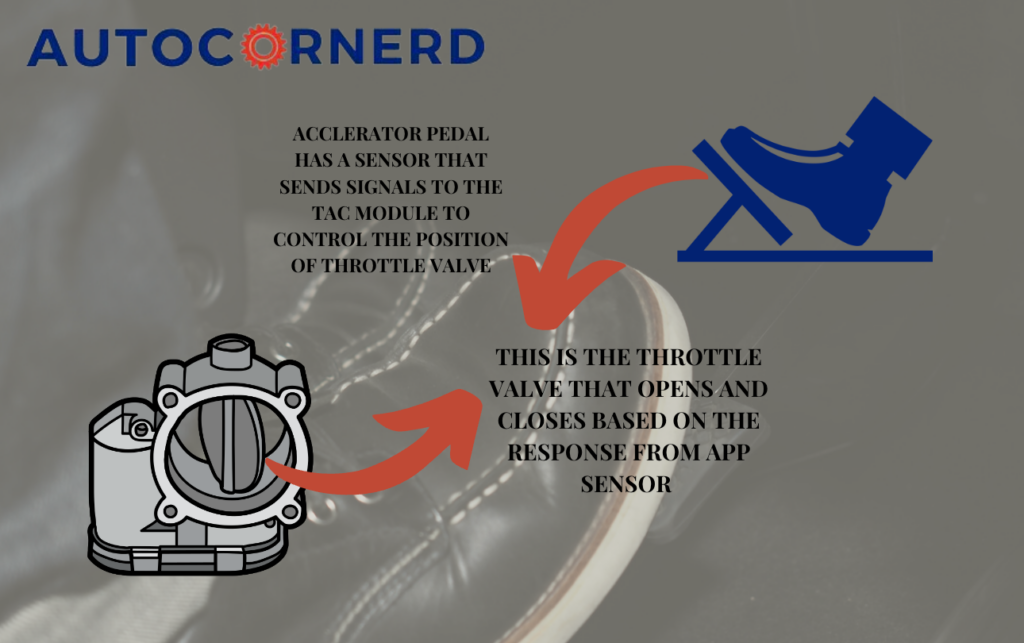
The throttle plate opens fully when the engine runs at Wide Open Throttle (WOT). This means the engine runs at maximum speed as the accelerator pedal presses fully down.
WOT contrasts with closed throttle. At closed throttle, the engine idles as the throttle plate stays closed. With WOT, the engine revs to its highest rpm.
Checking your vehicle’s performance becomes easier with Wide Open Throttle. WOT can also help find any engine or performance troubles. It diagnoses car problems well. WOT lets you test your vehicle’s power and performance limits too.
Don’t use WOT when driving on roads. It can make the car lose control and get dangerous. WOT isn’t good for daily driving either. It burns more fuel and strains the engine unnecessarily.
How Does Car AC Compressor Work?
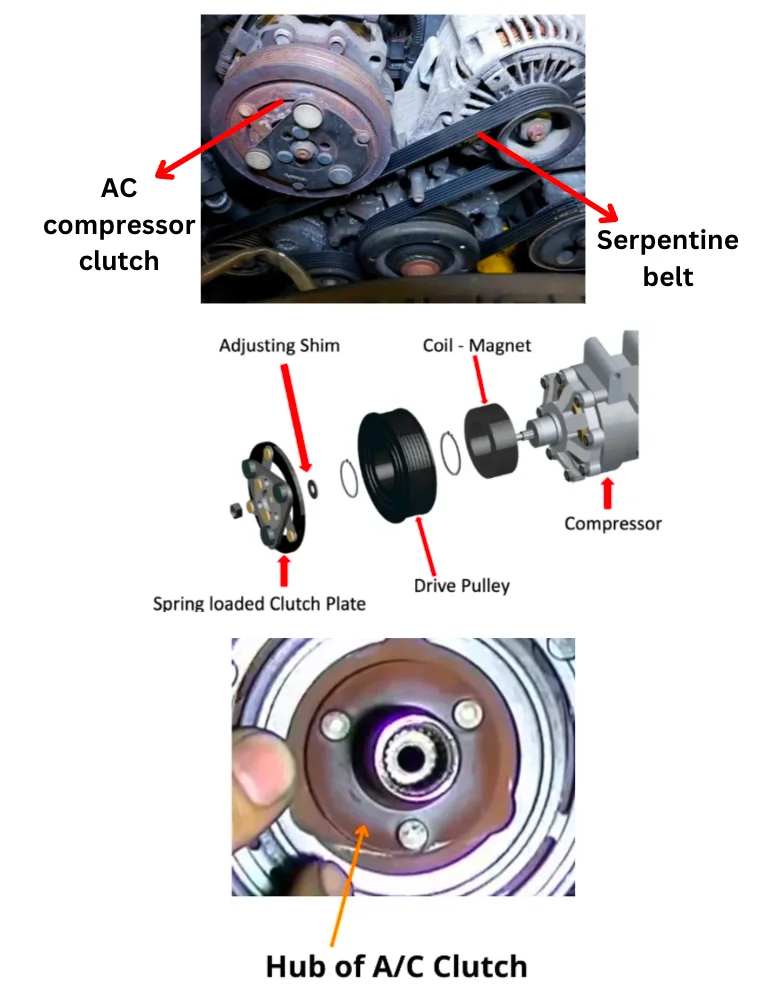
The AC compressor is not always spinning when the engine runs. This is a wrong thinking many people have.
The AC compressor is the heart of the AC system in your car. A belt from the engine’s crankshaft drives the compressor.
The AC compressor squeezes the refrigerant gas. The gas then goes through the condenser, evaporator and valve for expansion. This makes the air inside the car cool.
The engine’s crankshaft uses a rubber belt to give power to the AC compressor. This belt is looped to connect to all pulleys including the AC compressor pulley.
Here are the basic parts of the car AC compressor:
- AC Compressor Pulley: The serpentine belt spins this pulley which is part of the compressor.
- Magnetic Coil: This coil engages the AC clutch with the pulley.
- AC Compressor Clutch: The clutch connects the pulley and compressor so the pulley can spin the compressor.
You can watch the following Youtube video to understand the operation of an AC compressor:
Furthermore, I have written a detailed guide on car AC compressor engages and disengages intermittently to learn more.
How Does Throttle Control Car AC?
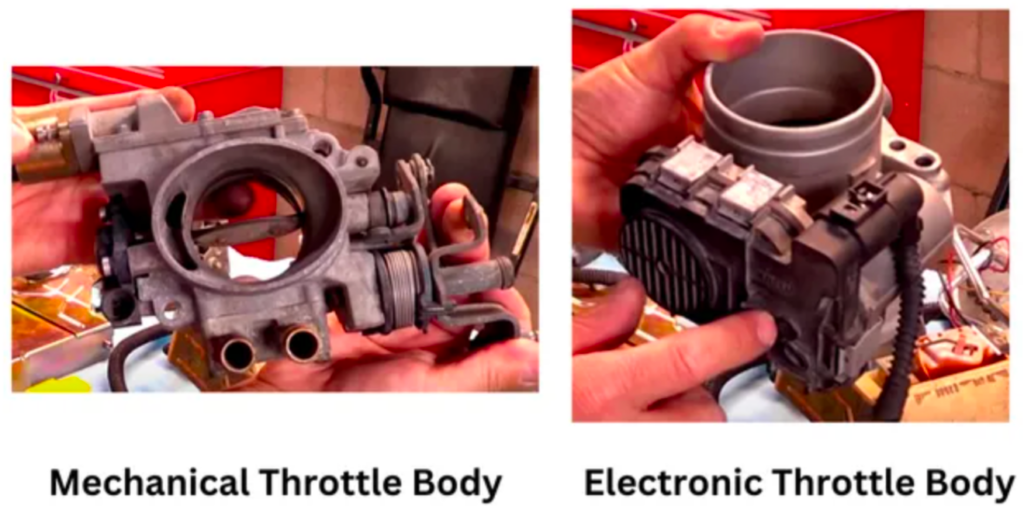
The throttle handles opening and closing the car AC by signaling where the butterfly valve is in the throttle body.
The gas pedal links directly to the throttle body. Based on how far down the gas pedal is pushed, the throttle valve opens. In an electronic throttle body, the gas pedal has sensors that tell the ECU to control the throttle body.
If the throttle body is mechanical, it connects to the gas pedal through a spring mechanism.
On the throttle body, you’ll see throttle position sensors (TPS). They signal to the ECU how open the butterfly valve is. So when the butterfly valve opens all the way at WOT, the TPS tells the ECU. Then the ECU can take action, like turning the AC compressor clutch off to turn the AC off.
Causes Of Car AC Turning Off At Wide Open Throttle
1. Too High Pressure In the AC System
The fast engine speed makes driving exciting. But if the air conditioner fails to keep you cool, the thrill goes away. When the car AC turns off at full throttle, the issue likely ties to the pressure in the system.
The compressor in the car AC is driven by the engine. As the engine RPM rises, the compressor speed also rises. With this compressor speed increase, the refrigerant pressure also rises.
A high-pressure switch is installed in the AC system for protection from too much pressure. This switch turns off the compressor when the high-side pressure reaches a certain level. So if the AC system pressure gets too high, it will make the AC turn off when the engine speed increases past a certain limit. This prevents damage to the system.
A scientific study has also been conducted in which the effect of AC compressor speed on the discharge pressure of refrigerant has been studied. The output of this study in the form of a graph is shown below:
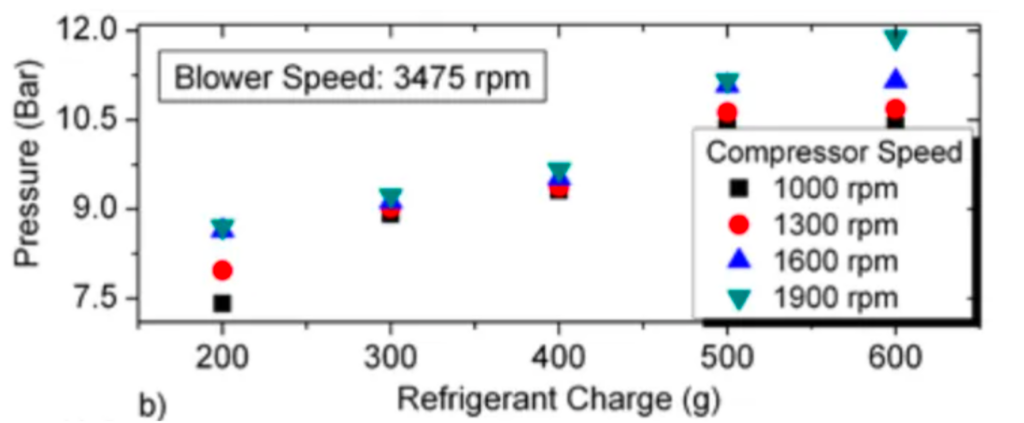
Source: https://docs.lib.purdue.edu/cgi/viewcontent.cgi?article=2469&context=iracc
Apart from the compressor RPM, the pressure inside the AC system can also readily increase due to blockage in the condenser, accumulator or orifice.
The hot, pressurized refrigerant passes through the condenser, where the heat is released into the atmosphere and the refrigerant is cooled. If the condenser is plugged up with debris and dirt, the compressor has to work hard to push the refrigerant. So, the refrigerant pressure increases.
2. Provide Full Power To The Wheels
The engine’s crankshaft gives power to the AC compressor pulley using a belt. The engine’s crankshaft also links to the transmission to give power to the wheels.
When the car is at full throttle, the engine works at maximum power. It sends most power to the transmission to move the wheels. This leaves less power for the AC compressor to work. So the AC turns off.
When the car is not at full throttle, the engine does not work at maximum power. It has more power to send to the AC compressor. This makes the AC compressor work well and cool the cabin.
You can further read about it in my guide on car loses power and acceleration when AC is on.
3. Problem With Vacuum Check Valve
Keep in mind that the vacuum produced by the engine is minimal at the wide-open throttle and maximum at idle.
The reason is that when the butterfly valve of a throttle body is fully opened at WOT, it allows more air to enter the engine. At low engine RPMs, the vacuum continues to operate in the vacuum reservoir.
If the airflow from the AC vents stops and switches to the windshield, it means that there is a problem with the vacuum check valve.
Cars having manual AC have vents controlled by the engine’s vacuum. The vacuum produced by the engine’s air intake is responsible for controlling the opening and closing of vents’ flaps through vacuum-operated actuators.
The flaps that open and close the car AC vents are pulled shut by springs when their actuators are shut off.
In the engine, there is a vacuum check valve that closes when the vacuum is minimum at full throttle so that it prevents backflow of air through the vacuum line and the flaps of AC vents continue to operate at WOT.
From the following schematic diagram, you can understand the routing of vacuum lines in AC system:
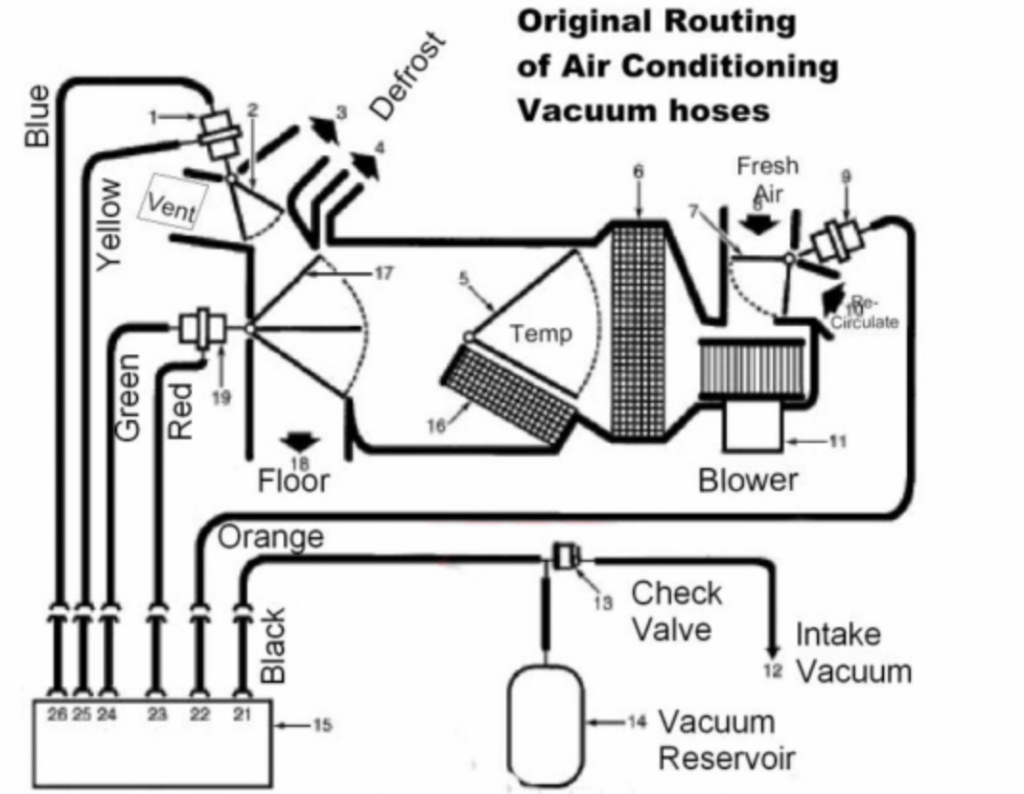
Now, the default setting of the AC airflow is through the dash vents. If the vacuum drops, the airflow will shift to the windshield vents.
This is what the vacuum check valve prevents, and allows airflow through dash vents when the engine is under load at wide open throttle.
So, if there is no airflow from AC vents at wide open throttle, you should check the vacuum check valve and any vacuum leaks in the AC system through vacuum hoses.
I have also attached the below Youtube video for a better understanding:
